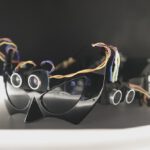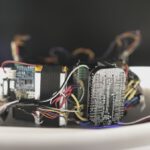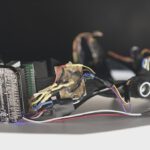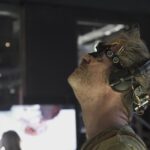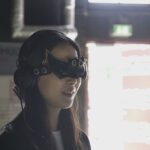What Is It (not) Like to Be a Bat?
The work “What Is It (not) Like to Be a Bat?” is an interpretation of the famous paper “What Is It Like to Be a Bat” (1974) by the American philosopher Thomas Nagel. The work consists of a self-built headset which uses three ultrasonic sensors and a gyroscope, translating the data in real-time into sound — analogous to the sonar of a bat — creating an interactive musical “Bat-Theme”. Hence, it is not only questioning the hard problem of consciousness, but also the urge to of science, philosophy and technology to solve it, which might be impossible by nature.
Background & Idea
Inspired by the famous paper “What Is It Like to Be a Bat?” (1974) by philosopher Thomas Nagel, the
work at hand deals with the hard problem of consciousness and subjectivity. Arguing, that we can
never access anyone’s mind, I came to the idea to build a proof-me-wrong manifestation of Nagel’s
thought play. He chose the example of a bat as a mammal, which, as we can imagine, might have
some kind of subjective experience. However, it couldn’t be more distant to us, since it can fly, barley
see, sleep upside down, has magnetic sense and most importantly sonar. If we now try to how it
would be to be a bat, it couldn’t get closer, than a human trying to be an animal. This has nothing to
do with the actual experience of a bat. We don’t even know, if the bats sonar is in any sense similar to
our auditory perception. Eventually, this leads to the conclusion, that even if we have advanced
technology and science to measure and simulate bats behaviour and biological system, we will never
know, what their qualia is like. With these thoughts in mind, I started the work.
Technical and artistical realization
Technically, the artwork consists of a Bela computer (Linux based), three ultra sonic sensors, a 9 DoF
(Degrees of Freedom) Gyroscope, Accelerometer and Magnetometer as well as a battery pack with its
respective circuits to charge and switch. The Bela Computer runs several python scripts and a
supercollider script, generating musical sounds in real-time. All sensors are interconnected and
influencing the sound.
I decided to not sonify the sensor inputs in a traditional way, since this work aims at the
inaccessibility of the qualia. Instead, I chose to compose my own sonic interpretation of the bats
mind. The sound consists of three randomly generated, atonal soundscapes, triggered at a distance of
around 5 meters by each sensor. The soundscapes are panned to the respective position (left, middle,
right). Similarly, an arpeggiator is tiggered at a distance of 3 meters. The closer it gets, the more alive
and intense is the sound. The arpeggiator complement each other harmonically. Depending, whether
the user looks up or down, the harmonics of the arpeggiator changes in its pitch and its chords.
Finally, a piano chord generator is getting triggered, by the movements through space. A possibility
of more than 40 harmonics in different timings is possible.
What Is It (not) Like to Be a Bat?
Within the work, I am obviously not trying to answer this question. We will never know, what it is
like to be a Bat, or any other living being. With our ongoing technological and scientific
advancements, we get the impression, that consciousness might be demystified soon – or is even
already. But the fact is, that we still know only little about it. Maybe we will even never solve that
riddle. The work tries to open up the discussion, of where simulations can lead us and where they
can’t, while approaching the topic in a playful way. At the end, everyone has to decide themselves, if
they know now, how it is like to be a bat.
